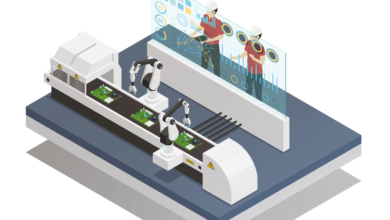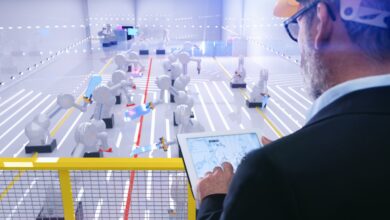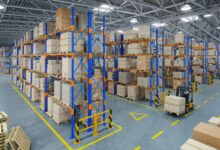5 Myths About Industry 4.0

Whenever a new idea or technology comes your way, facts and myths follow suit. Lately, there have been many ideas about the trajectory of Industry 4.0, the fourth industrial revolution preparing to create a new manufacturing paradigm, ranging from automation to inter-device communication. But amidst all these ideas, there are a few questions lingering in minds. Questions like, “How will you know which aspects of Industry 4.0 to prioritize, which technologies to invest heavily in, or how to determine expectations with other stakeholders in your organization?” In fact, being able to answer these questions will contribute to your clear understanding of what you really want when talking about Industry 4.0. But before pondering the answers, there’s something else that needs to be done, and that’s dispelling all the myths surrounding this topic.
#1: Industry 4.0 is Overhyped.
Given the hype in the market, it’s understandable to think that Industry 4.0 is just a passing fad. However, Industry 4.0 is an information technology based on realistic strategies that creates waves in the global production chain. Each of the things like artificial intelligence, advanced analytics, automation, inter-device communication, and industrial IoT (IIoT) provides significant developments individually for the value chain. In fact, Industry 4.0 is based on the thesis that it will represent more than the sum of the parts of the mentioned technologies. The combination of AI and IIoT systems can provide a transformative contribution to businesses; similarly, inter-device communication combined with machine learning can provide the same contribution. In this way, you can implement new technologies that will be highly effective in your processes and workflows, which were not thought of ten years ago.
#2: Systems Need to Be Completely Overhauled
Industry 4.0 is not just about installing a monolithic ERP software or adding a key technology to the value chain; it’s about allowing different technologies to work together through new avenues. Therefore, manufacturers don’t need to start from scratch and burn everything down to create a smart factory. Even in a small workshop, you have the power to upgrade your technology in one piece. Perhaps your first step could be installing IIoT devices in the factory field to monitor the progress of materials in production. Therefore, you can provide high value in terms of visibility. After successfully implementing these processes, you can start integrating machine learning to turn this data into insights. Along with this insight, you can start increasing the amount of automation used in your fully-fledged smart factory.
#3: Planners Will Be Unemployed
For some people, the automation part of Industry 4.0 equation is one of the sticking points. Because there is serious concern that the workflow here will make people obsolete and leave millions unemployed. It is certainly true that the nature of industrial employment may change as a result of the upcoming technological paradigm shift, but it is not possible for digital workflows to replace people. Because the main purpose of the emergence of Industry 4.0 is to utilize technology to make people more efficient in their jobs.
#4: It’s Too Expensive for SMEs
While the general view of many people about Industry 4.0 is quite futuristic, SMEs think that Industry 4.0 transformations are not suitable for them. As mentioned before, you don’t need to allocate a ton of money to embrace Industry 4.0. On the contrary, SMEs can adopt different technology solutions within their budgets and gradually create integrated Industry 4.0 workflows over time. Each piece of technology invested in should provide gains that can support operational improvements on its own, allowing the saved costs and increased efficiency to be reinvested in new technologies. Thus, with smart steps taken over time, digital transformation will be completed within your timeline and budget. The real challenge here lies in implementing the right technology in the right order according to your needs.
#5: There’s Only One Way to Embrace Industry 4.0
One of the myths is that there is only one correct way to move towards Industry 4.0.
Most businesses will prioritize different elements of this new paradigm. As long as you can align technology adoption with operational goals and KPIs, you’ll realize that you’re in a good place to approach the fourth industrial revolution. And when you feel like something isn’t working, be sure to readjust. These new technologies are designed to work together. So instead of aiming for the ideal situation with one big investment to get results, determine the sequence of necessary steps and do your best to ensure the success of each small step.





